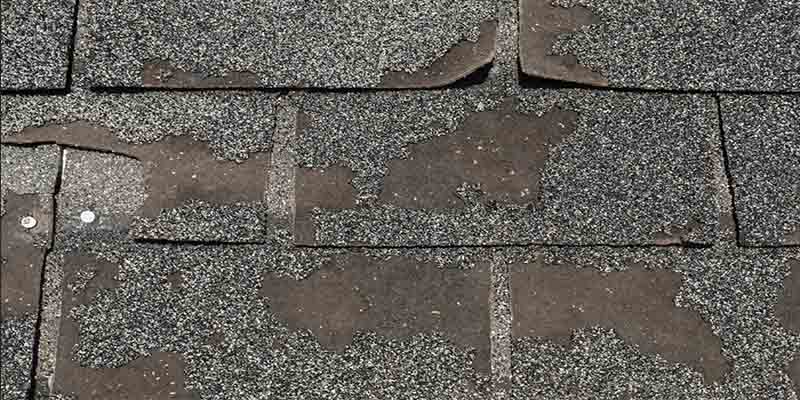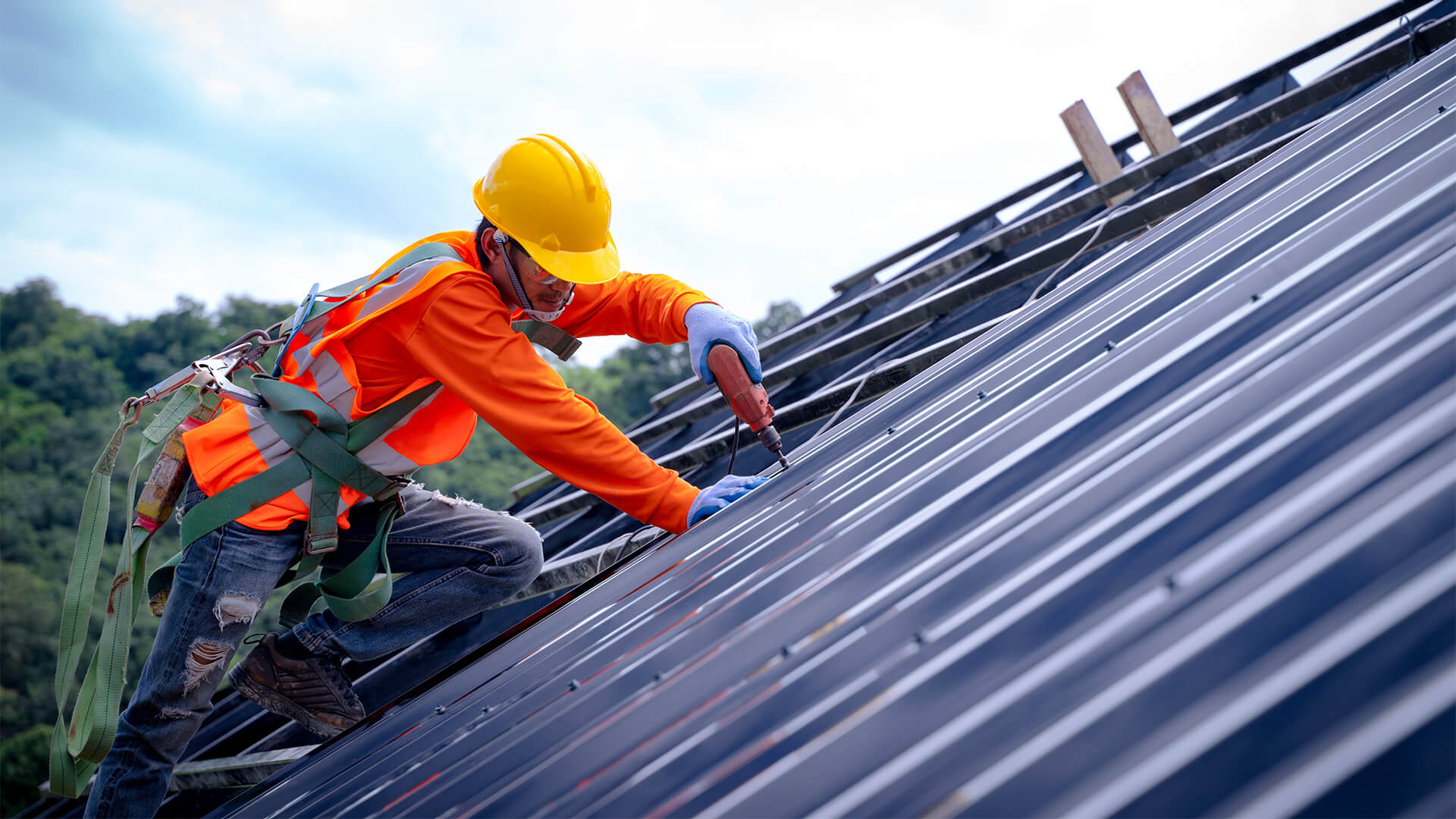Recognizing the Different Kinds Of Roof Coverings: A Comprehensive Overview for Homeowners
In the realm of homeownership, selecting the appropriate roofing design is a decision that lugs substantial effects for both performance and visual allure. With a selection of alternatives-- varying from the standard gable to the contemporary level-- each type provides one-of-a-kind advantages and difficulties that ought to straighten with the home owner's certain requirements and environmental factors to consider. Comprehending these distinctions not only aids in making an informed option but likewise influences long-term maintenance and energy efficiency. As we discover the intricacies of numerous roof types, it comes to be noticeable that one size does not fit all; the best selection may amaze you.
Gable Roofing Systems
Saddleback roofs, identified by their triangular shape, are amongst the most preferred roof styles due to their simpleness and effectiveness in shedding water and snow. This layout features 2 sloping sides that meet at a ridge, enabling effective drain and lessening the danger of water buildup. The steep pitch typically related to gable roofings enhances their capacity to deal with heavy precipitation, making them suitable for different climates.
In enhancement to their useful advantages, saddleback roofs offer visual convenience. They can be adjusted to different architectural styles, from standard to contemporary homes. The design can additionally suit extra functions such as dormer windows, which boost all-natural light and ventilation in the attic space.
Moreover, gable roofing systems provide ample room for insulation, contributing to power efficiency. Homeowners can pick from a range of roof products, consisting of asphalt roof shingles, metal, and floor tiles, even more enhancing modification options.
In spite of their benefits, saddleback roofs might require additional support in locations prone to high winds or heavy snowfall. On the whole, the gable roofing stays a preferred option as a result of its mix of functionality, toughness, and visual charm.
Apartment Roofs
Flat roofing systems are often acknowledged for their minimalist design and sensible applications, specifically in commercial and industrial setups (oahu roofing). These roofs include a horizontal or virtually straight surface, which enables for easy building and flexible area application. While they might do not have the aesthetic charm of angled roofs, flat roof coverings provide countless benefits, particularly in metropolitan atmospheres where making best use of room is crucial
One of the main benefits of level roofings is their ease of access. House owners can make use of the roof covering area for various objectives, such as rooftop yards, balconies, or solar panel installments. In addition, flat roofs are generally more cost-efficient to install and preserve contrasted to their sloped counterparts, as they need fewer materials and labor.
Nonetheless, flat roofs do present particular obstacles. Correct drain is important to stop water merging, which can bring about leakages and architectural damage. Thus, choosing high-quality waterproofing materials and routine assessments are crucial for making sure long life. Usual materials utilized for flat roofing systems include built-up roofing (BUR), changed asphalt, and single-ply membrane layers, each offering distinctive benefits. Generally, level roofing systems offer as a practical and versatile selection for many home owners and organizations alike.
Hip Roofing Systems
Hip roofing systems are identified by their sloped sides that converge on top, forming a ridge. This style stands out from gable roofing systems, as all 4 sides of a hip roof covering slope downwards towards the wall surfaces, offering an extra secure framework. The angle of the look here slopes can vary, enabling for convenience in architectural aesthetics and functionality.
Among the main advantages of hip roof coverings is their capability to withstand heavy winds and unfavorable climate condition. The sloped surface areas make it possible for much better water drainage, lowering the risk of leaks and water damage. Additionally, hip roof coverings use look at this website boosted attic space, which can be utilized for storage or perhaps exchanged habitable locations.
Nonetheless, building a hip roofing can be a lot more costly and intricate than easier roofing system kinds, such as saddleback roofs. The extra product and labor associated with developing the slopes and making certain correct structural honesty can bring about higher expenditures. Despite these disadvantages, lots of house owners favor hip roofing systems for their durability, visual charm, and capacity for energy effectiveness.
Mansard Roof Coverings
Mansard roof coverings, typically acknowledged by their one-of-a-kind four-sided design, attribute two inclines on each side, with the reduced incline being steeper than the upper. This architectural style, stemming from France in the 17th century, is not only aesthetically attractive but functional, as it maximizes the usable room in the upper floors of a structure. The high reduced incline enables for even more headroom, making it an ideal choice for lofts or attics, which can be transformed right into living areas.
Mansard roofings are defined by their versatility, suiting different building styles, from traditional to modern. They can be created with various products, including asphalt shingles, slate, or steel, providing home owners with a variety of choices to match their budget plans and preferences. In addition, the style permits the combination of dormer home windows, boosting natural light and air flow in the upper levels.
However, it is essential to think about the prospective downsides. Mansard roofs may need even more maintenance because of the intricacy of their design, and their steep inclines can be challenging for snow and rain runoff. Overall, mansard roofs integrate beauty with practicality, making them a prominent selection among property owners looking for unique architectural features.
Shed Roof Coverings
As house owners progressively look for simpleness and capability in their building layouts, dropped roofings have arised as a prominent selection. Identified by a solitary sloping plane, a shed roof provides a minimalist aesthetic that enhances various home styles, from contemporary to rustic.
Among the main advantages of a shed roofing is its uncomplicated building and construction, which learn this here now usually equates to decrease labor and material prices. This design allows for efficient water drainage, reducing the risk of leaks and water damage. In addition, the vertical slope offers adequate room for skylights, enhancing natural light within the interior.
Shed roof coverings additionally provide flexibility in terms of use. They can be effectively incorporated right into enhancements, garages, or outside frameworks like pavilions and sheds. Furthermore, this roofing system design can fit numerous roofing products, including steel, asphalt tiles, and even environment-friendly roofing systems, lining up with environmentally friendly campaigns.
Nevertheless, it is essential to think about regional climate problems, as hefty snow lots might require modifications to the roof's angle or framework. On the whole, lost roof coverings provide a practical and cosmetically pleasing choice for property owners seeking to optimize functionality without compromising style.
Verdict


Gable roofing systems, defined by their triangular shape, are among the most preferred roofing styles due to their simpleness and effectiveness in dropping water and snow. oahu roofing. The steep pitch commonly linked with gable roof coverings boosts their capacity to take care of hefty rainfall, making them suitable for various environments
While they might lack the aesthetic appeal of pitched roof coverings, level roofing systems use countless benefits, especially in city atmospheres where maximizing space is critical.
